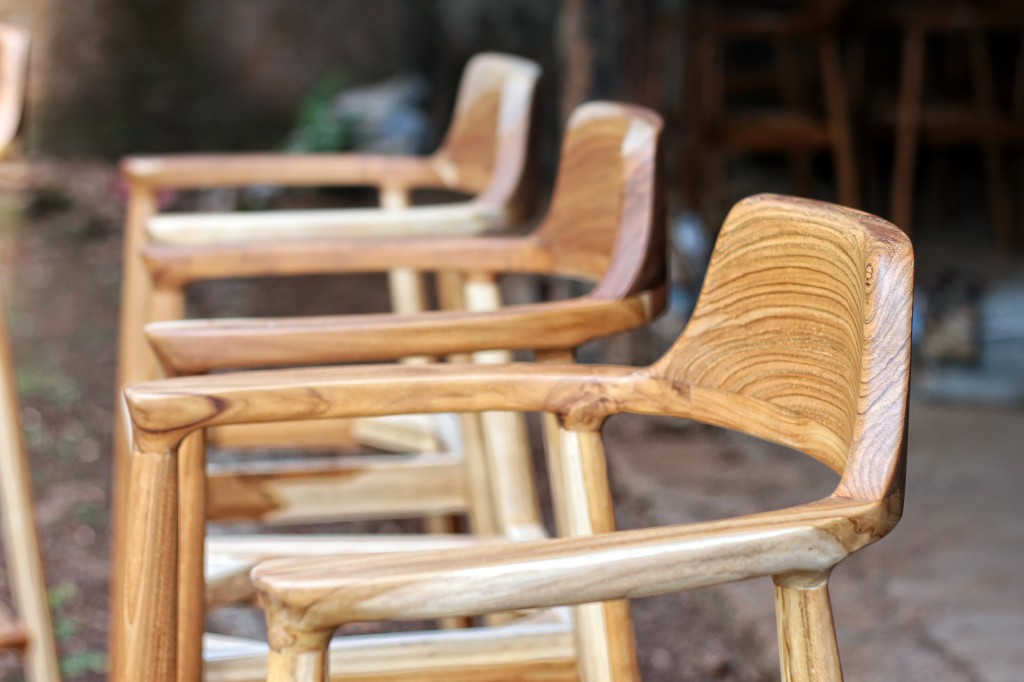No products in the cart.
Portfolio English
Wood Finishing with Varnish and Its Sheen Level
Wood finishing is the last stage in making furniture process. The purpose of finishing is to provide protection on the surface of the furniture and also adds artistic value.
The application of wood finishing is to apply varnish on the surface of furniture. Varnish is a liquid-like a paint that is a mixture of drying oil, resin, thinner, and solvent. By the way, varnish is different from paint which is to cover the entire surface of the wood with a certain color.
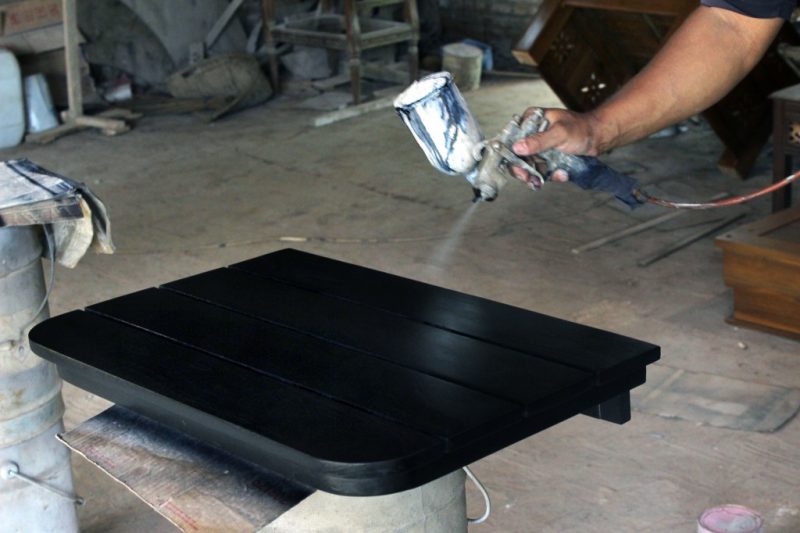
The application of varnish is not to cover or replace the surface of the wood with a certain color, but only to coat it so the color remains natural. In essence, the purpose is to provide protection on wood surfaces and it is transparent.
Wood Finishing Process with Varnish
Before applying a varnish on the surface of the furniture there are several steps to follow. Firstly, the furniture should be smoothed using sandpaper to get the good smoothness as expected. Second, the entire surface must be clean: no dust or something like that which may adhere when varnishing process. After that, the varnish can be applied using a brush or a spray tool.
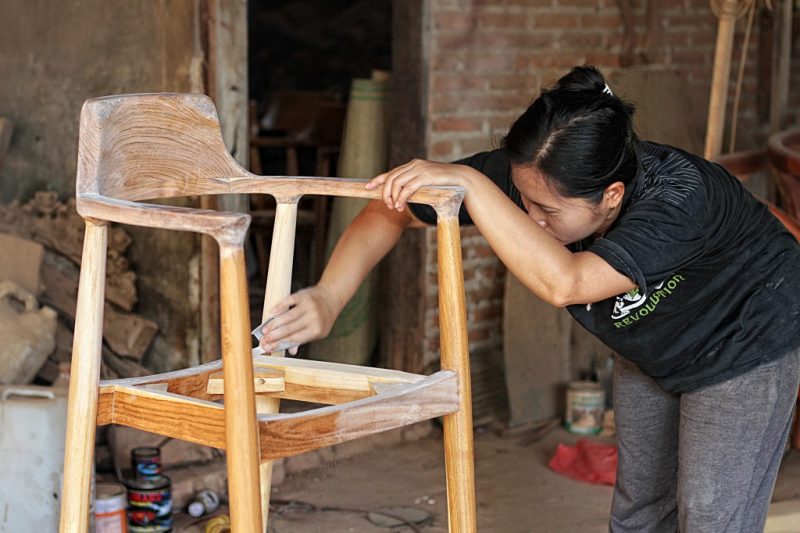
Furniture that has been coated with the varnish has a sheen level which classified into several categories. It is important to know the sheen level before wood finishing process.
Sheen Level in Wood Finishing Using Varnish
Basically, the sheen level of varnish can be classified just into two categories: glossy and non-glossy (Doff). Then the category can be divided into four levels including Doff, Satin, Semi-Glossy, and Glossy.
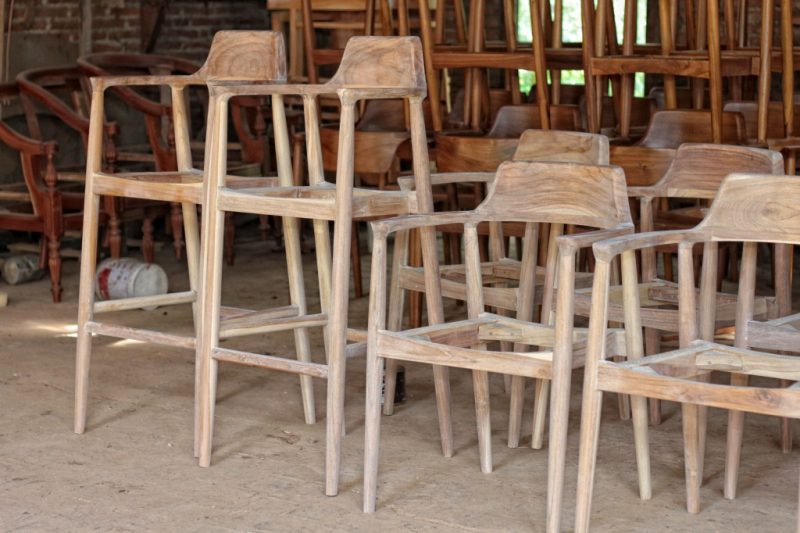
Doff
Doff only has a sheen level between 20 and 29 percent. In plain view, the wood that coated with doff level does not give any reflection from the light. But by this way, the surface color of wood looks very natural. At a glance, the wood does not have any coating on the surface. This level of varnish is usually applied to the furniture that is in the family room in order to give the impression of warm and natural.
Satin
Satin level is shinier when compared to doff level. At this level, however, the gloss of the wood surface is not particularly noticeable. This level is usually applied to maintain the natural color of the wood but it has a thicker protection. Satin has a sheen level between 30 to 39 percent.

Semi-Glossy
The sheen for this level, of course, is shinier when compared with satin or doff. Semi-glossy has the sheen level between 40 to 59 percent. Furniture that coated by the varnish with this level looks shiny but not too extreme.
Glossy
At this level, the wood surface has sheen level up to 60-79 percent. If it is exposed to the light in the room or outside, the wood surface will give more reflections. Moreover, when it is touched, the wood surface feels very smooth. Therefore, this level is very suitable for furniture like chair, table, door and so on.
Pros and Cons between Doff and Glossy
As mentioned earlier, the sheen level in wood finishing using varnish can be categorized into doff and glossy. Each of these categories has its advantages and disadvantages.
Gloss level can be applied to various home furniture. For example for tables chair, cabinet, door and so on. Almost all furniture is suitable to use this level. But on the other hand, high level of gloss will eliminate the natural color of the wood.
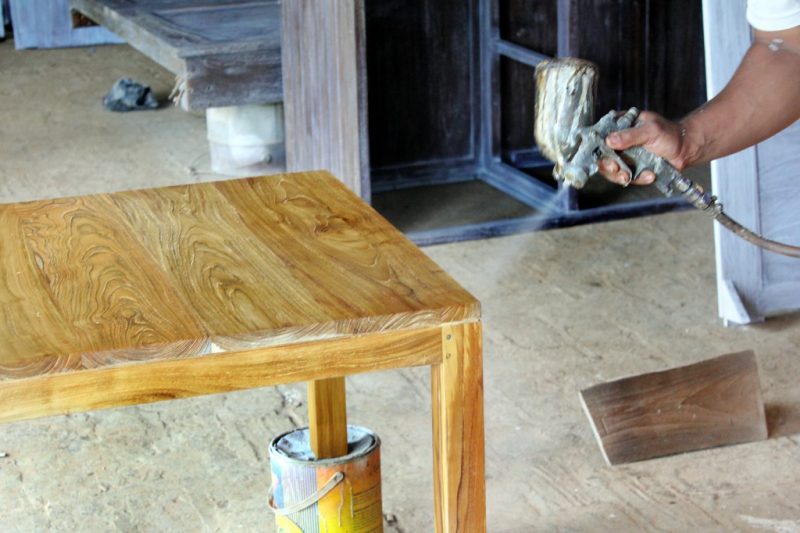
Meanwhile, doff or satin level is not recommended for furniture that potentially scratched. For example, the furniture which is in children room or kitchen set. The protection system of doff level is thin. So it is more easily scratched and difficult to clean.
Therefore, if you make the durability as a priority in wood finishing, then it is better to apply the gloss level because it has stronger protection and more resistant. But if you want to keep the naturalness of wood color, then applying the doff level or satin is a good choice.

